Abstract
In the autumn of 1982 routine annual influenza vaccination was offered, by reminder letters and follow-up telephone calls, to 273 independent elderly individuals registered at a community health clinic in Hamilton, Ont. The demographic and geographic characteristics and the health beliefs of those who either accepted or did not accept the vaccine were compared. Among those who received reminder letters there were no significant differences in the rates of vaccine acceptance according to age, sex, household composition or ease of access to the clinic. The patients who reported having previously experienced side effects from the vaccine and perceived a lack of efficacy of the vaccine were more likely not to accept it this time. Both a lack of effort by health care providers (to promote vaccination) and patient behaviour appeared to contribute to pre-existing low levels of influenza vaccination coverage. Although physicians' efforts to inform patients about the vaccination clinics resulted in a tripling of the overall rate of acceptance of the vaccine, there remained a "hard core" of almost half the patients who were unwilling to receive the vaccine, apparently because they perceived its risks to outweigh its benefits.
Full text
PDF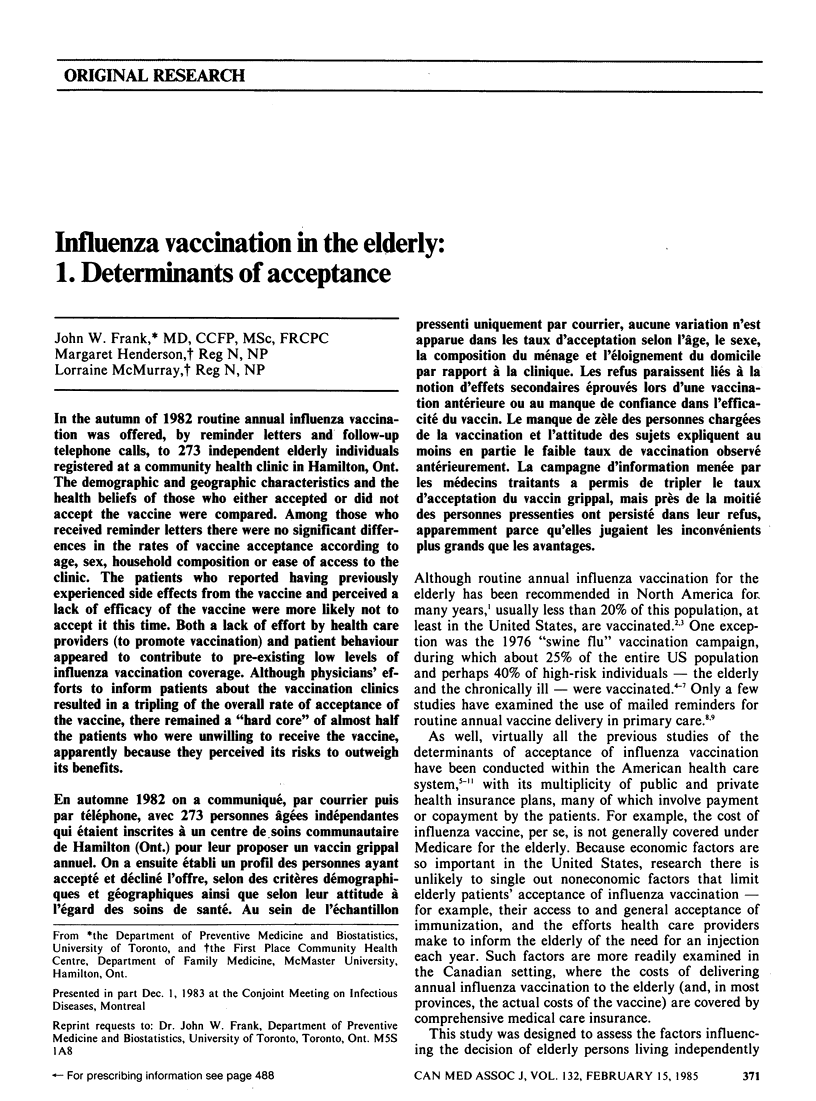
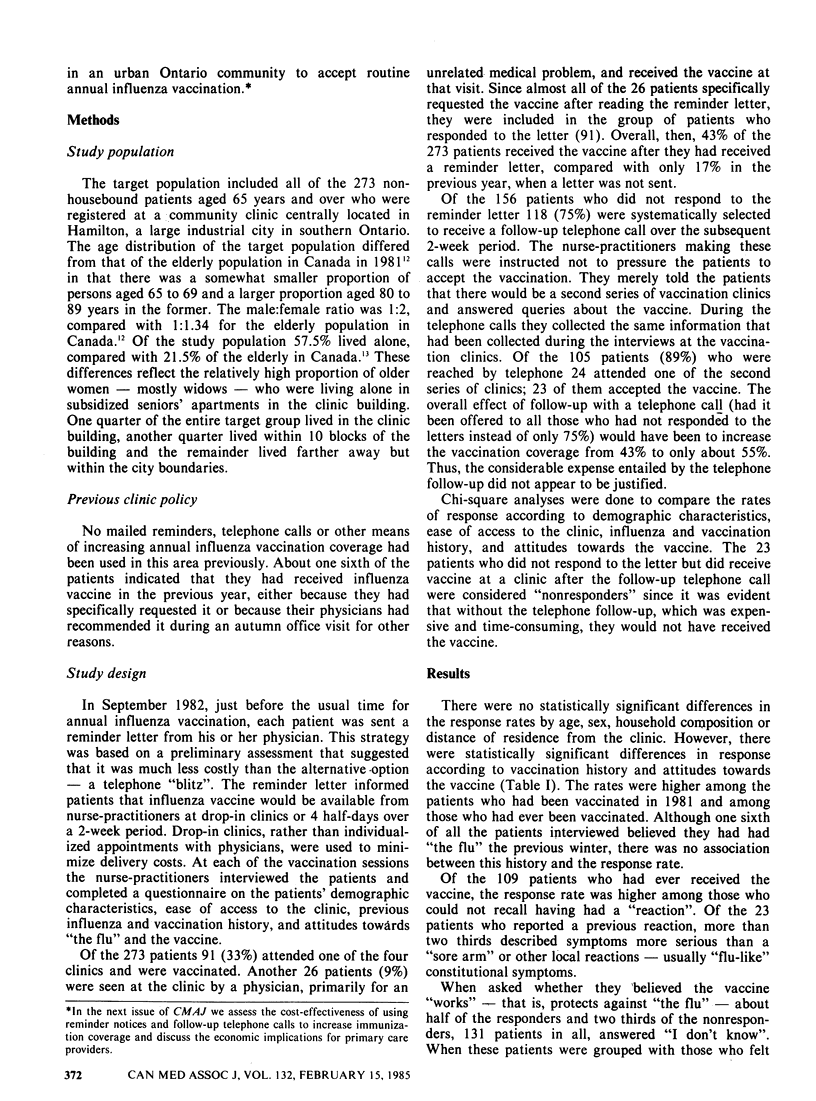
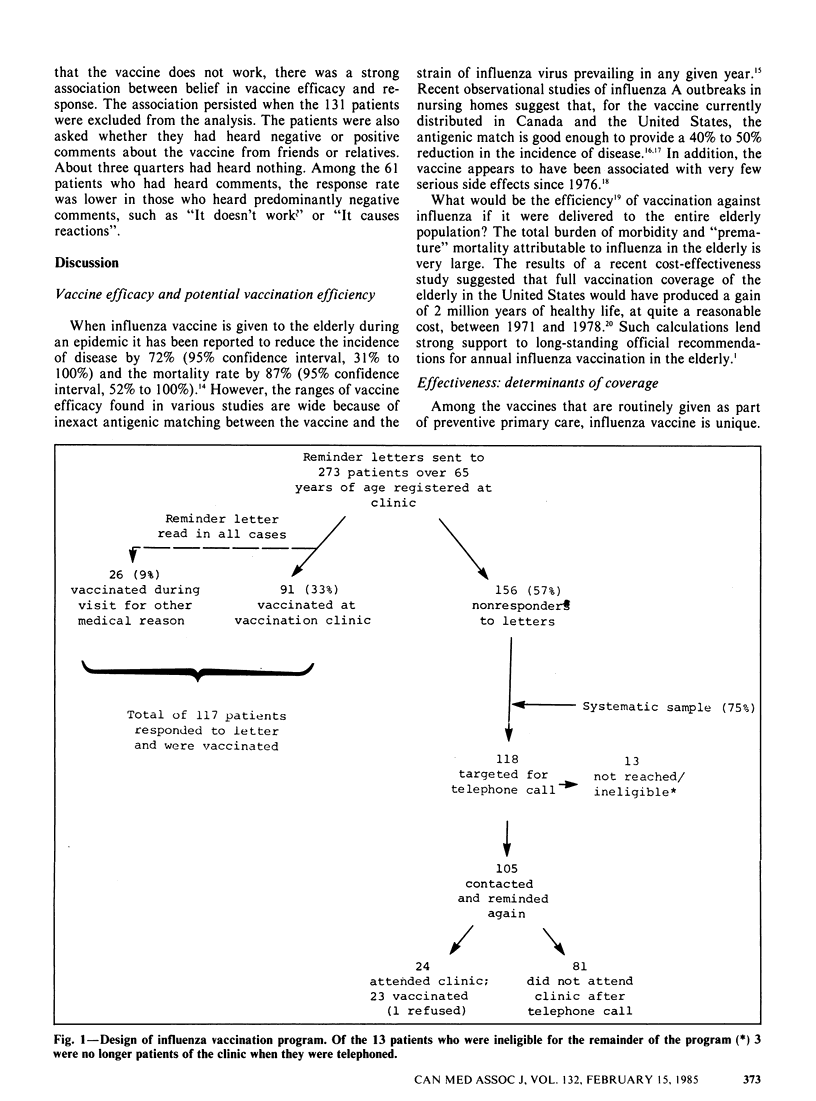
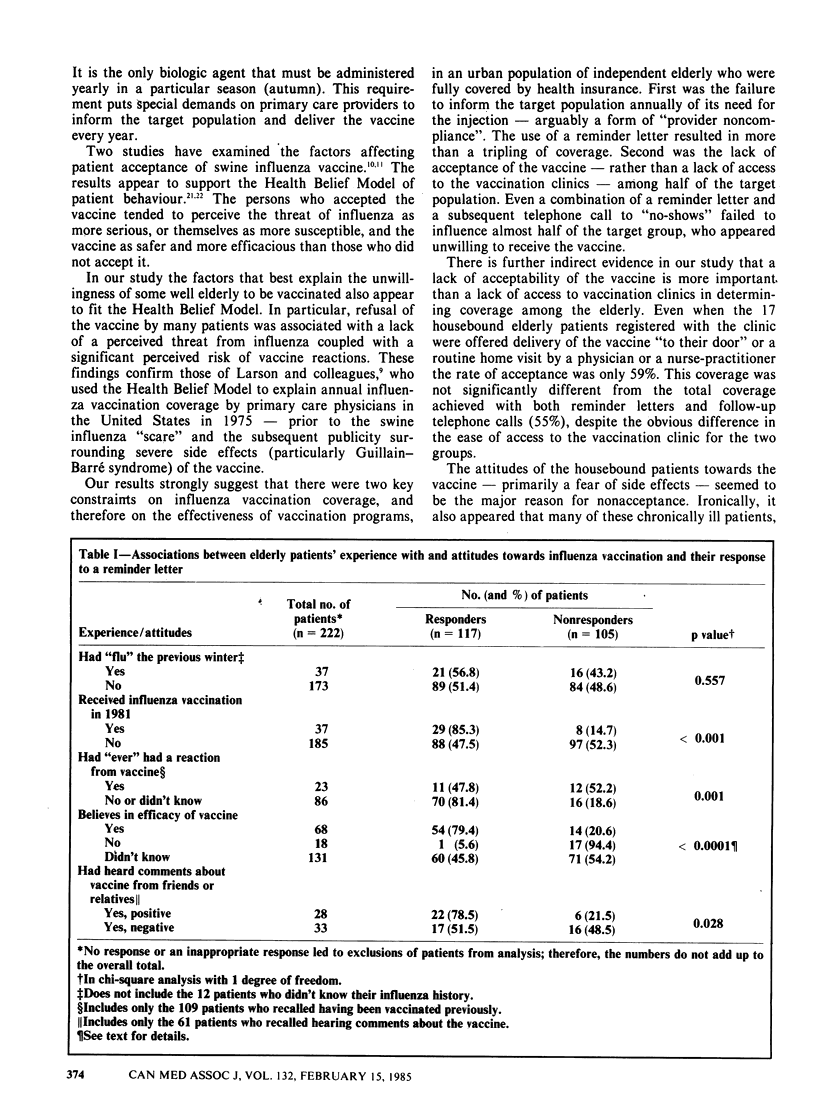
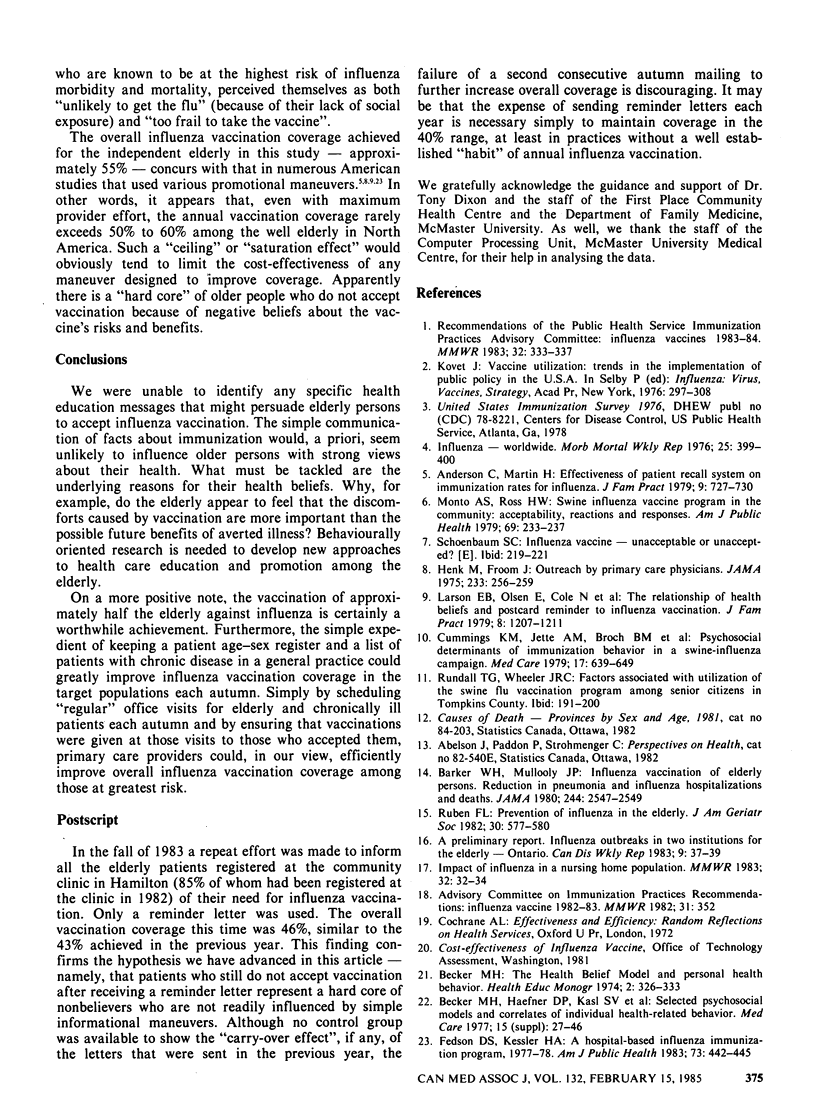
Selected References
These references are in PubMed. This may not be the complete list of references from this article.
- Anderson C., Martin H. Effectiveness of patient recall system on immunization rates for influenza. J Fam Pract. 1979 Oct;9(4):727–730. [PubMed] [Google Scholar]
- Barker W. H., Mullooly J. P. Influenza vaccination of elderly persons. Reduction in pneumonia and influenza hospitalizations and deaths. JAMA. 1980 Dec 5;244(22):2547–2549. [PubMed] [Google Scholar]
- Becker M. H., Haefner D. P., Kasl S. V., Kirscht J. P., Maiman L. A., Rosenstock I. M. Selected psychosocial models and correlates of individual health-related behaviors. Med Care. 1977 May;15(5 Suppl):27–46. doi: 10.1097/00005650-197705001-00005. [DOI] [PubMed] [Google Scholar]
- Cummings K. M., Jette A. M., Brock B. M., Haefner D. P. Psychosocial determinants of immunization behavior in a swine influenza campaign. Med Care. 1979 Jun;17(6):639–639. doi: 10.1097/00005650-197906000-00008. [DOI] [PubMed] [Google Scholar]
- Fedson D. S., Kessler H. A. A hospital-based influenza immunization program, 1977-78. Am J Public Health. 1983 Apr;73(4):442–445. doi: 10.2105/ajph.73.4.442. [DOI] [PMC free article] [PubMed] [Google Scholar]
- Henk M., Froom J. Outreach by primary-care physicians. JAMA. 1975 Jul 21;233(3):256–259. [PubMed] [Google Scholar]
- Larson E. B., Olsen E., Cole W., Shortell S. The relationship of health beliefs and a postcard reminder to influenza vaccination. J Fam Pract. 1979 Jun;8(6):1207–1211. [PubMed] [Google Scholar]
- Monto A. S., Ross H. W. Swine influenza vaccine program in the community: acceptability, reactions and responses. Am J Public Health. 1979 Mar;69(3):233–237. doi: 10.2105/ajph.69.3.233. [DOI] [PMC free article] [PubMed] [Google Scholar]
- Ruben F. L. Prevention of influenza in the elderly. J Am Geriatr Soc. 1982 Sep;30(9):577–580. doi: 10.1111/j.1532-5415.1982.tb05666.x. [DOI] [PubMed] [Google Scholar]


